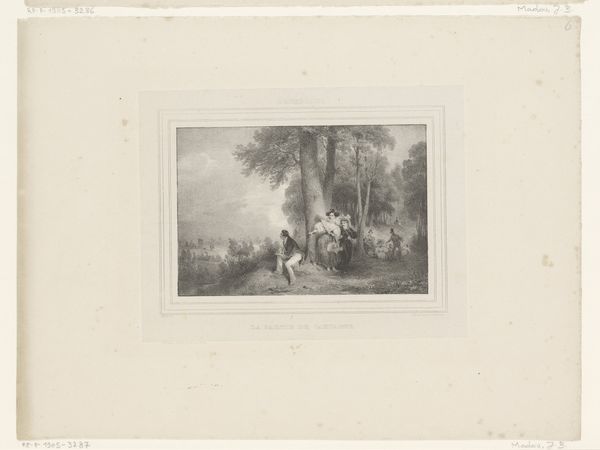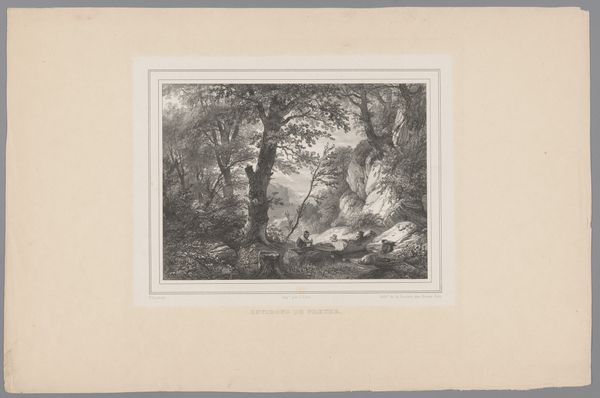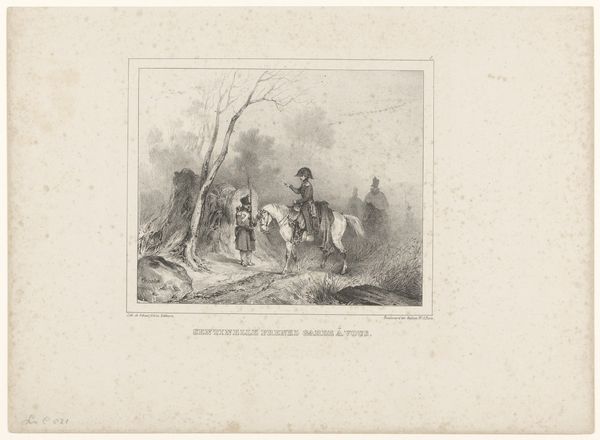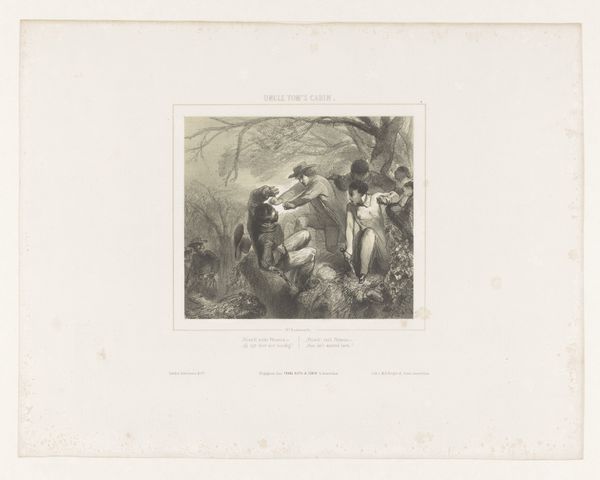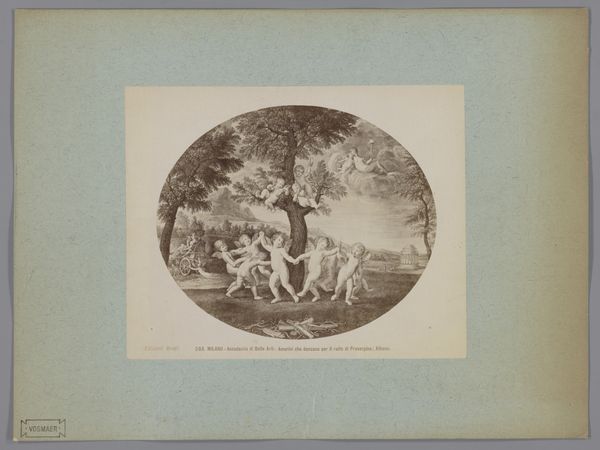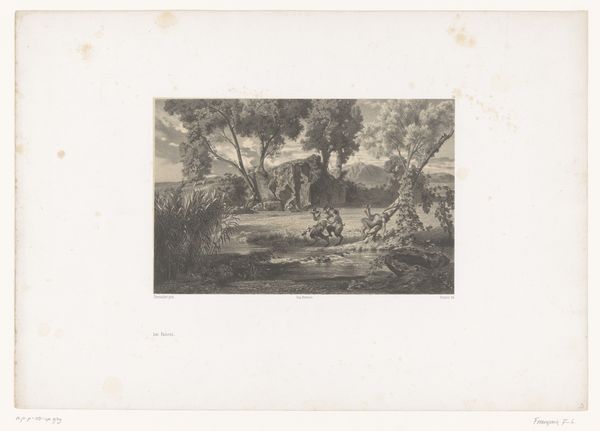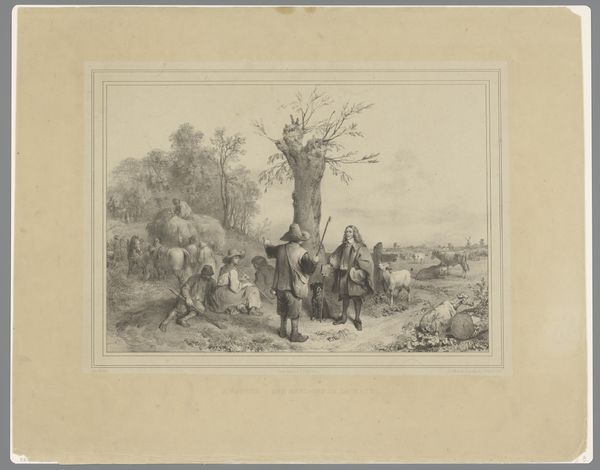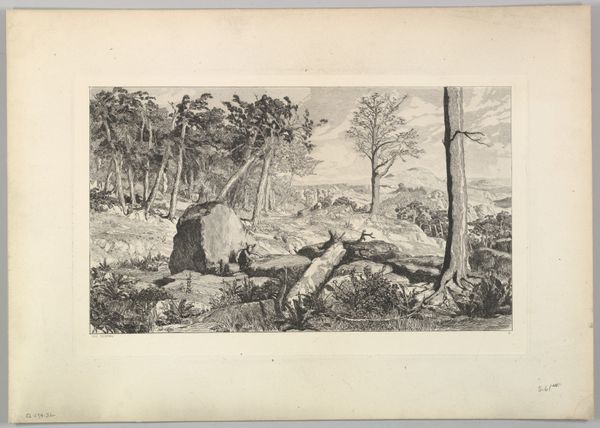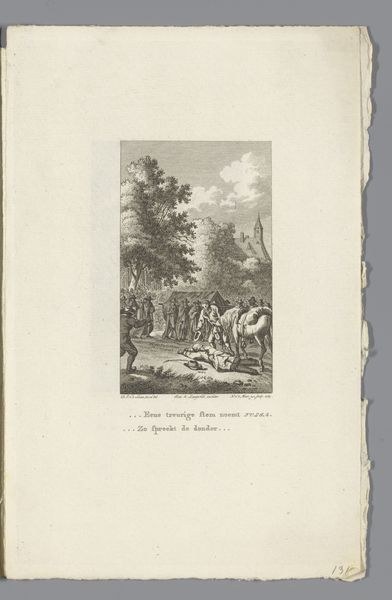
drawing, print, etching, paper
#
drawing
#
muted colour palette
# print
#
etching
#
landscape
#
paper
#
forest
#
romanticism
#
genre-painting
#
watercolor
Dimensions: height 275 mm, width 360 mm
Copyright: Rijks Museum: Open Domain
Editor: So, here we have Théodore Fourmois' "Gezelschap rust in een bos," or "Company Resting in a Forest," from 1834. It’s an etching printed on paper and it strikes me as a tableau of leisure. What is most interesting to you in terms of process or how it was made? Curator: What strikes me immediately is the tension between the apparent leisure depicted and the labour involved in producing such a detailed etching. Consider the social context: who was consuming such images and how does the etching process itself, a form of reproduction, democratize or perhaps, alter, access to such imagery? Editor: That's a good point, it looks like it wants to illustrate a relaxing, leisured escape into nature, but that the method of production, printmaking, creates wider accessibility for those excluded from that lifestyle. Were there similar tensions in the rest of the art world at that time? Curator: Absolutely. We see this questioning of luxury and labor emerge strongly across artistic disciplines as industrialization gathered pace. What materials were readily available? Were workshops mass producing items formerly made individually? Who were the patrons commissioning and buying work, and what expectations did that generate in relation to material value and artistic labor? Editor: So, this relatively easily produced etching of a leisurely scene highlights that period of tension. I hadn't really thought of the role of artistic labor when looking at it at first glance. Curator: Precisely! The choice of etching allows for relatively widespread consumption of this romantic vision. This affects not just who *sees* the image, but shifts the emphasis from a unique crafted art object to an engagement with the culture and values portrayed in the piece itself. The landscape becomes a commodity to be possessed and consumed visually through the print, just as luxury goods and labour began shifting due to changing economy. Editor: Thanks, seeing it in terms of its materiality and how that intersects with the subject matter really adds a new layer to it. Curator: Indeed, understanding art requires examining the circumstances of its creation. Thinking about materials, labor, and accessibility alters the narratives we often tell.
Comments
No comments
Be the first to comment and join the conversation on the ultimate creative platform.
